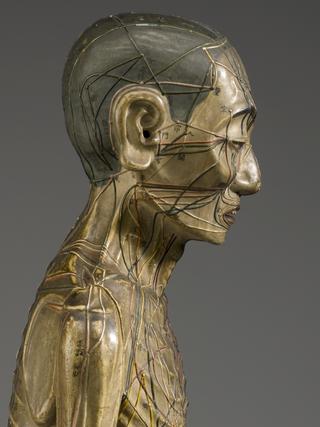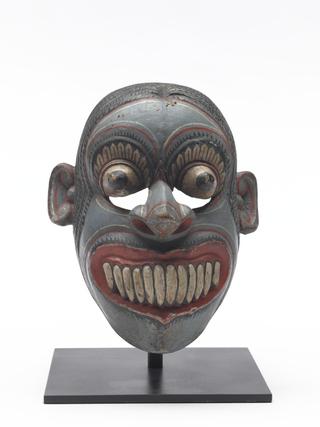
Calculus stone extractor, India, before 1936
- Made:
- before 1936 in India




Calculus stone extractor, steel, Indian
Calculus stones are mineral deposits that can build up in organs such as the bladder, kidneys or gall bladder. They can cause infections, extreme pain, irritation and swelling. This is an Indian example of a calculus stone extractor. It was used in a painful operation to remove the growths.
The oldest reference to the surgical removal of calculus stones is in the Susrata Samhita. This is a classic text of Ayurvedic medicine. Susrata was said to be a Hindu surgeon who practiced from about 500BCE. Physicians now use sound waves to break up the stones inside the body without invasive surgery.
Details
- Category:
- Asian Medicine
- Collection:
- Sir Henry Wellcome's Museum Collection
- Object Number:
- A643681
- Materials:
- steel
- Measurements:
-
overall: 25 cm x 204 mm x 57 mm, .04kg
- type:
- calculus stone extractor




